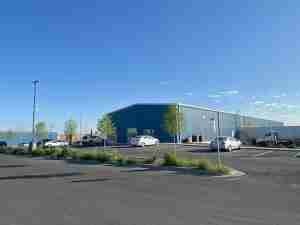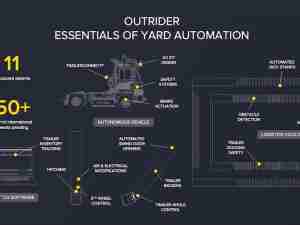Bringing Fleet Management into Today’s Technological World
posted by AJOT | Oct 26 2017 at 06:18 AM | Intermodal
Fleet management and innovation are two terms you don’t often hear together. Fleet management is the administrative task of organizing, recording, and analyzing the operations of a company’s vehicles--including maintenance, driver safety, fuel expenses, and vehicle safety--with the goal of lowering the cost of maintaining a fleet of vehicles. Given that fleet management is part of very traditional industries (automotive, shipping, etc.), change takes time and can easily be stalled when dealing with so much red tape and legacy systems that have been in place for decades.
A brief history of fleet management
Fleet management, however, has come a long way since its beginning. In the 1950s and 60s, vehicle fleets used CB radios to increase communication among themselves; this spawned a new culture and slang amongst drivers on the road. CB radios were much cheaper and accessible than phones, and they provided a way for drivers to communicate in areas with little phone signal. CB radios especially came in handy during the 1973 oil crisis as a way for drivers to discuss areas with lower oil prices and where they could go past the 55 mph speed limit.
Fleet managers also around this time began to use computers for bulk data processing (whereas before a punch card system was in place). In the 1970s, electronic vehicle orders came on the scene allowing fleet managers to communicate with factories and receive a fast response. Managers also used computers for reporting, although analytics were nowhere near what they are today.
The 1980s’ computers allowed fleet managers to access the fleet management company’s mainframe computer, which meant a substantial reduction in manual and paper-based processing and reporting. And then in the 1990s, the Internet changed the game, drastically improving data collection, analysis, and storage for fleet management.
Once GPS arrived for public use, fleet managers adopted this new technology as a way to track individual vehicles. As the technology evolved, managers could track more and more elements such as speed, fuel consumption, battery vaults, engine data, and more. This technology, however, was expensive and challenging because of poor cell signal.
In the 2000s, when mobile devices began to emerge in regular use, fleet management technology changed as drivers could use support and productivity applications right on their cell phones. Reporting, analytics, and driver safety all therefore improved from mobile use. With all of the new technology, however, fleet managers continued to struggle with certain pain points.
Fleet manager’s concerns today
78% of maintenance managers are not happy with their current maintenance approach. The real issue is that not only do errors in fleet management lead to transportation delays, but they can also result in human casualties, making the need for a better system crucial. The legacy systems in place are often costly and slow, which results in the loss of productivity and too much downtime.
With the introduction of IoT, connected devices can alleviate much of these problems. A ‘connected car’ has far less downtime, as problems are reported and solved at a much faster rate. On-board diagnostics (OBD) allows vehicles to self-diagnose and report problems or potential issues. This gives the managers access to the status of all vehicles. Furthermore OBD2 ports that connect your computer to your car gives more data to managers. Drivers can also use this technology to have instantaneous reports about their vehicles sent right to their smartphone. By tracking and modifying driver behavior, fleet managers can take an active approach to reducing accidents on the road.
Fleet managers need a fast-responding, scalable approach to reduce accidents, limit vehicle downtime, and decrease overall costs. Antiquated systems currently in place could use an update in order to take advantage of technology that acts in real-time to help drivers and fleet managers.
Written by: María Paz Gillet Martín, the CEO and Co-Founder of Jooycar








